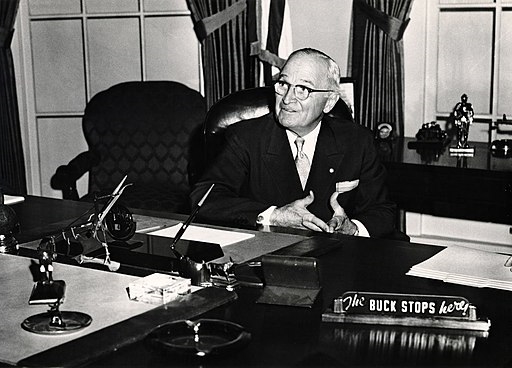
Employee engagement is important in our new world if you want to survive and thrive in the age of “The Great Resignation”
Here is the fact… Employee Engagement Starts with Your Leadership!
Employee engagement doesn’t start with your employees. It starts with you, the leader. With the example you set, the culture you build, the commitment you make to inspiring your team members.
I talk with leaders all the time about the efforts they can make. Practical, real-world steps to boost engagement. Let’s look at what works and what doesn’t when it comes to implementing an employee engagement program.
How Leaders Can Boost Engagement
Align the Workforce
The members of your team need to be working toward the same thing, headed in the same direction—but how can they do this if they don’t have any sense of where the company is headed, or what you’re all trying to achieve? As the leader, it falls to you to articulate a clear sense of mission—and to make plain how every project, every task, and every employee contributes to that mission.
Empower Your Managers
Those who are in direct managerial roles—interacting with employees daily—are the ones you need to invest in first. Develop their skills of engagement and empowerment. Provide them with direction in how they can listen, set clear expectations, and deliver feedback that is truly constructive. Make sure the managers are all on the same page about employee engagement.
Emphasize Fairness
You can’t afford to have employees disenfranchised because they think you’re playing favorites. In everything you do—from resource allocation to how you make sales—make sure you’re applying principles of fairness.
Create Leaders
Don’t settle for employees who do an efficient job every day. Invest in promising talents and encourage them in leadership development. Help them develop the skills of engaging and motivating other employees and provide opportunities for them to prove themselves.
Measure!
As the leader of your team, one of your most important responsibilities is measuring results—and that includes the results of engagement efforts. Use surveys and other employee feedback programs to benchmark your progress.
You’re a true believer in the power and importance of employee engagement—but the same can’t be said of just everyone. There may be members of your own C-suite or management team who still don’t really understand what employee engagement is or why it matters. Thus, before embarking on any kind of employee engagement initiative, you’ll need to persuade them that it’s good for the bottom line.
Easier said than done? Not necessarily. Here are a some of the latest facts.
Gallup’s 10th Employee Engagement Meta-Analysis
The Gallup company has been closely tracking the engagement and well-being of the workforce. They have found that there are important ties between employee engagement and peak performance outcomes including profitability and employee well-being.
According to Gallup only 36% of US employees are engaged in their workplace and globally 20% of employees are engaged at work.
The other finding which goes right to the heart of poor leadership is to percentage of actively disengaged employees. This number went from 14% to 15% through June 2021.
What is an actively disengaged employee? They are employees that report miserable work experiences and have poor managers and leaders.
Proving the Value of Employee Engagement

In 2020, the importance of having an engaged workforce was never more urgent. Organizations with high employee engagement were more resilient and able to weather the many challenges that came with a pandemic, an economic collapse and societal unrest.
Employee quit rates are now reaching record highs and the “great resignation” has not even peaked yet! Lastly, among actively disengaged workers 74% are either actively looking for new employment or watching for openings.
As of April, 72% of U.S. white-collar workers were still working from home, compared with 14% of blue-collar workers.
This means it matters more now than ever before to have an employee engagement plan that works for everybody.
Employee Engagement Starts with Good Leadership
Many people know about the famous sign President Harry S. Truman, had on his desk with these words: The buck stops here. What he meant, of course, was that he and he alone was responsible for everything going on in his White House; beyond him, there was no one else to be held accountable.

I think that’s a good attitude for leaders at all levels of development. Everything that happens under the umbrella of your organization is a reflection on you and your leadership—and that includes employee engagement.
To put it a little bit differently: Employee engagement isn’t about little workplace rewards or “fun” events, though those things can be fine. Employee engagement springs out of your own leadership style. So, if your employees aren’t as engaged as you’d like them to be, the first thing to do is to conduct a rigorous inventory of your own leadership approach.
4 Ways Leaders Boost Employee Engagement Quickly
Start thinking about engagement early on.
As in, before the employee even starts work. As soon as you hire someone, start talking to them about mission, culture, etc. Help them identify ways they can add their voice to the company. New hires tend to be enthusiastic, so try to harness that positive energy!
Provide a sense of meaning.
I mentioned mission. I really believe that’s the key concept in employee engagement. Provide a sense of what your team is trying to accomplish—how it’s trying to change the world, disrupt the industry, or have influence in clients’ lives. Then show employees how they contribute to that mission.
Get outside the office.
I also made a comment about “fun” events. While parties and get-togethers are fine, what really makes a difference is any event that gets employees out of the office and working together on a project—whether that’s coordinating a fundraising run or building houses for those in need. Plan an event that will allow your employees to connect and to gel as a team outside your typical office context. And prove that you’re willing to roll up your sleeves and get in there with them. Be an involved, engaged leader!
Prove your commitment to balance.
Encourage your employees to take time for themselves—even if that just means getting them out of the office and home with their families on time each afternoon. Avoid sending after-hours emails or texts. And practice what you preach! Take some time for balance in your own life. Always lead by example!
Employee Engagement vs. Employee Satisfaction: Is There a Difference?

An engaged employee is a satisfied employee—right? Well, not necessarily. Though the terms employee engagement and employee satisfaction are sometimes used interchangeably, the truth is that they have vastly different meanings.
Defining Employee Engagement
Some quick definitions might be helpful. First, there’s employee engagement. This term describes employees who are committed to helping the business achieve its goals. Those employees who have an elevated level of engagement will come to work each day ready to do their best work—even going above and beyond the call of duty to help achieve team objectives.
Defining Employee Satisfaction
Employee satisfaction looks a bit different. Employees who are satisfied like coming to work each day and are happy with what they do—but that doesn’t necessarily mean they are good at it. Certainly, there can be a lot of overlap—but an employee who arrives to work late each day, without being penalized, and spends half the day playing games on his phone might be perfectly satisfied, yet clearly not engaged.
Is your Employee Doing Time?
That last example might be just a little bit extreme, but the point is simply this: It’s possible to have team members who are by no means unhappy with their workplace existence, and whose contributions to your team are minimal. For selfish reasons, these employees are happy—but they do nothing to boost those around them, nor to advance your broader business goals.
They are just doing time!
There’s a clear implication: Your company may put a lot of effort into making employees happy. There’s nothing necessarily wrong with that. Maintaining high morale is crucial.
Yet, if you believe happy employees are always good employees, you may be missing some key issues with your work force—specifically, employees who are coasting rather than truly engaging.
Why Going Beyond Employee Satisfaction Makes a Difference!
Are you meeting your team halfway or are going the extra mile for them? The key difference is this: Employees who are merely satisfied will never go above and beyond for you. The question is, how can you take those merely satisfied employees and move them toward true engagement?
There are many components to this, but one of the big ones is mission. Getting your employees to see that they are part of something bigger—to identify the business’ goals, and their own role in achieving those goals—is key.
Employee Emotions and its Role in Employee Engagement.
To engage your employees in a meaningful way, it’s wise to think in terms of emotions. As a leader, you must ask yourself: What are the emotional drivers for employee engagement?
What am I talking about? Simply that employee engagement is often rooted in feelings—feelings of being appreciated, of being wanted, of doing something meaningful, and of being part of something bigger. The bottom line everyone wants love, appreciation, 2 6 and respect! Like the food they eat, the air they breathe, and the water that they drink! If you give them love, appreciation, and respect The Sky’s the limit!
Emotional Drivers That Affect Employee Engagement
Your employees want to feel proud.
One of the big emotional drivers is a sense of pride; your employees want to feel like they are doing good, high-quality work that matters. They want to feel like they can go home and brag about the good things they accomplished during their workday. Does your organization promote this sense of pride? Are you giving your people meaningful work to do, and clearly showing the difference it makes?
Employees want to feel recognized.
Your employees want their excellent work to be noticed, and their efforts to be appreciated. Do you make a point of praising excellent work? Of saying thank you to your employees. Of passing along positive feedback from clients and customers?
Your employees want to feel like they are growing and improving.
Your team members also want to feel like they have opportunities for professional development—that the time spent at your company is sharpening them, not making them go stagnant. What kinds of professional development opportunities are you offering to your employees?
Employees want to feel heard.
A final emotional driver for employee engagement: Your team members want to have voices of their own.
Are you open to their feedback?
Do you involve them in decision-making?
Does your team feel like what they say is heard and taken seriously?
The importance of mastering emotional thinking and its positive impact on employee engagement cannot be understated. When you think in terms of how your employees feel—and, how they want to feel—you can start to think more specifically about employee engagement.
Employees represent a company’s most precious assets—and if your employees aren’t engaged, it means you’re neither taking care of them properly nor getting as much out of them as you could, plain and simple.
Why Employee Growth is the Key to Employee Engagement

Study after study confirms that, when it comes to employee engagement, one of the critical factors is development. Employees need to feel like they have opportunities to gain experience, to broaden their horizons, to deepen their skill-sets. To keep your employees engaged, offering these growth opportunities is essential—and here’s why.
When there’s no room for growth, employees feel stagnant.
There is a historic record for this. In 2010, surveys found that employee perception of company-sponsored growth opportunities was at an all-time low, across the board. And that makes sense, given the high unemployment rate and the fact that many company training programs were being done away with. Opportunities for promotion, meanwhile, were dwindling.
As a result, employee engagement numbers also plummeted. Employees across the country felt like they didn’t really have any way to move onward and upward—and their passion for work dropped because of it.
Growth opportunities help everyone.
By contrast, recent years have seen increased companies offering their employees chances to grow—educational opportunities as well as wider on-the-job experience. It’s not surprising that this motivates employees, especially younger ones, who value career development more than any other workplace benefits—including salary!
But growth opportunities aren’t only good for the employees. They’re also key for the company. They enhance the employer brand, by revealing that you really care about supporting your people in the long-term. When it comes to recruiting top talents, this is exceedingly beneficial.
The Importance of Investing in Team Members
Growth opportunities—whether training or promotions, or simply more delegated responsibilities—show that you believe in the employee and have confidence in their ability to thrive. Make your employees see that they are your most important assets, and you will also see your employee retention increase.
Growth is a powerful way to accomplish all of that and all you must do is invest in your team leaders. It might boost your employee engagement!
Four Areas to Improve Your Employee Engagement
As an executive coach and motivational speaker, I spend a lot of time talking about employee engagement. One thing I’m increasingly aware of is that not everyone’s clear on what engagement is—or why it matters. Let me break it down in this way: Employee engagement is about creating a workplace environment that empowers and inspires your team members to do their absolute best work.
It’s a win-win. It means you get good, creative, productive work out of your employees. Your employees, in turn, get a real sense of satisfaction from what they do. Engagement is something that every company should constantly be driving toward, though I’ll admit that it’s sometimes hard knowing how to do that.
Let me offer four categories in which there is always room for increased engagement. Hopefully, this will be a meaningful road map for you to make some improvements within your own company culture!
Alignment with Goals
Your employees should be aware not just of their daily tasks, but of the goals your company is working toward. This is important because it provides your employees with a sense of value in what they do—a sense that they are part of something meaningful, and that their contributions matter. Work to ensure your employees understand the big picture, agree with the overall direction of the company, and see where they fit into things.
Trust in Leadership
You don’t want blind, unquestioning faith from your employees, but you should have their trust—their basic belief that the leadership of the company is competent and stable. Be mindful that your employees are always watching you, and that you have opportunities day in and day out to demonstrate integrity.
Effective Management Practices
All those who are in supervisor or manager positions should be on the same page regarding honest communication, clarity of expectations, constructive feedback, and effective coaching. Make sure your company has a culture of empowerment and motivation—something that starts with leaders.
Employee Value
Its critical that your employees feel valued. Affirm them when they do good, solid work. Give them leeway to make mistakes and offer constructive feedback when it’s called for. Recognize their contributions, and make sure they know that you value them.
Now that we have looked at what leaders can do to improve employee engagement let’s examine common mistakes leaders make that prevents employee engagement as well.
4 Ways Leaders Jeopardize Employee Engagement
Every leader wants to see their employees engaged, truly locked into the work they’re doing. What some leaders forget is that engagement starts with them. As a leader, your style and approach can either make or break employee engagement.
How Leadership Lapses Compromise Engagement
No Sense of Goals or Mission
Your employees want to feel like they’re part of something bigger. They want to have a clear sense of what the company’s trying to achieve, and how their own role furthers those objectives. Are you consistently grounding your leadership style in the Big Picture—or do you get so swept up in the day-to-day that you neglect to connect employees to that broader mission?
Forgetting That You Set the Tone
If you’re constantly working long hours, staying in your office until late into the evening, or sending a lot of after-hours emails and texts, that sends a clear signal to your employees: That they, too, need to be putting in long hours at the expense of their family life. That’s a recipe for burnout, and for poor engagement. Remember that you lead by example, for better or worse!
Not Allowing Employees to Be Heard
Do your employees feel like they can offer ideas or feedback without being judged? It’s vital for your employees to know that you care about their opinions. That doesn’t mean you have to act on them—just that you should provide a channel for employee input.
Failing to Measure Engagement
We live in a world where data and analytics are easily accessible—and that includes data on your employee engagement. Are you sending out surveys? Are you looking at the numbers? And are you using data to plan for ongoing improvement? Leaders, work with your HR team to ensure that you’re taking a methodical and data-driven approach to employee engagement.
Recently I’ve been approached by smaller companies with under fifty employees concerened about improving employee engagement. It’s a little different than collaborating with a major corporation however the principles are still the same
Employee Engagement at Smaller Businesses

All businesses strive to engage their employees—but some face particular challenges. For smaller companies, where budgets are more restrictive, it can be tough to know just what you can do to keep your workforce committed and motivated.
But you don’t have to have big-company resources to keep your team members engaged. Here are a few employee engagement methods that can work well even in the smallest of businesses.
Customize Your Incentives
Your company benefits package might include any number of incentives—but it’s important to remember that there’s no one-size-fits-all solution here.
Instead of spending money on standard incentives that only some of your employees want, provide some custom options.
Your older employees are more interested in enhanced healthcare benefits, while younger ones find greater appeal in travel opportunities, gift cards, or educational opportunities.
Incentives work best—and offer the most bang for buck—when you tailor them to your employees. That’s something any company can do, including the small company or the growing company.
Give Your Employees a Voice
Another way to boost employee engagement: Help your team members to feel like they truly have a voice within your company.
Make sure to hold brainstorming sessions where all ideas are respected. Provide different channels for employees to provide their feedback.
This doesn’t mean you have to act on every single idea that comes your way; just listen and make sure your employees know that you value their perspective.
Create a Sense of Mission
Here’s a way to boost engagement without spending a dime: Help your employees to understand that they are part of something bigger than themselves. Articulate your company’s mission and its short- and long-term objectives. Get buy-in from your team members and ask for their feedback. Most importantly, clarify the ways in which each employee in each role contributes to the big picture.
Bottom line: Show your team members that what they do matters very much to the big picture.
Three Things That Sabotage Employee Retention

There’s nothing in your company culture that doesn’t have an impact on employee engagement and retention. Every ritual, every rule, every practice affects employee engagement and retention in some way—whether for good or for ill. As such, even team leaders who have the best intentions can inadvertently undercut their own attempts to keep employees motivated. Here are three of the most common forms of self-sabotage.
Micromanaging Your Employees
You hired your team members for a reason—ostensibly because you believe in them and trust them to do an excellent job.
Your employees need to be reminded of this. They need to have you affirm it to them, both in word and in action. But when you delegate something to them and then lean over their shoulder, not allowing them the freedom to accomplish anything on their own terms, you undermine that message. In doing so, you can sabotage employee confidence.
Simply put: You must trust your people. And if you don’t, you shouldn’t have hired them in the first place.
Blaming Your Employees
Everyone makes mistakes. In fact, that’s one of the main ways in which we grow. But if you jump on your employees for every little error, casting blame rather than offering support, you suppress that growth potential.
There is a time and a place for constructive criticism. If blame is all you offer, don’t be shocked when employee engagement tanks.
Not Giving Your Employees Enough Credit
Your team should rise and fall together; you share victories as well as defeats. And if the team accomplishes something, everyone should feel good about it.
Don’t take all the credit for yourself. Don’t deprive your employees of the affirmation they deserve after a job well done. Make sure everyone feels included in your company’s broader sense of mission—and in the achievement of key objectives.
Employee engagement should emanate from all corners of your company. This starts by recognizing the areas where you’re coming up short. If you’re aware of these problems in your company, take action against them today!
Business & Finance Articles on Business 2 Community
(23)
Report Post






